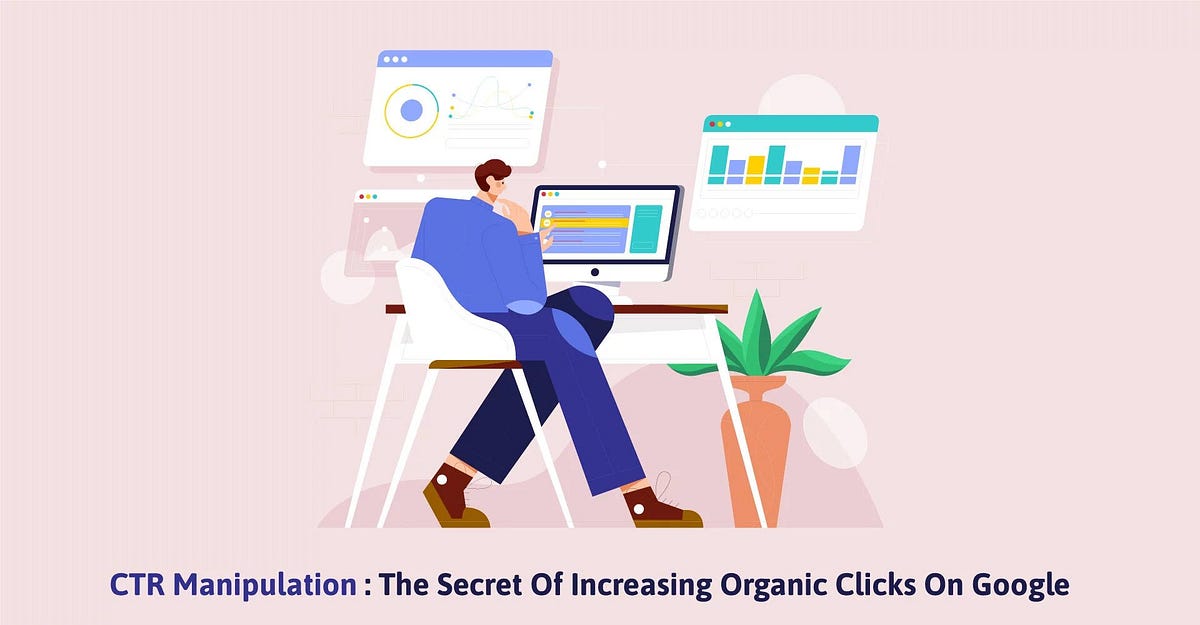How to Gauge the Impact of CTR Manipulation on Your Advertising And Marketing
Comprehending the subtleties of click-through price (CTR) manipulation in marketing is crucial for businesses pursuing authentic user involvement. By analyzing essential metrics such as conversion prices and bounce prices, marketing experts can discover potential disparities that might emerge from man-made improvements. Utilizing devices like Google Analytics and executing A/B testing can offer understandings right into the efficiency of different techniques. The effects expand beyond instant information; the long-lasting results on brand honesty and individual trust warrant mindful factor to consider. What continues to be to be explored is exactly how these aspects adjoin and affect overall advertising and marketing success.
Understanding CTR Control
Understanding CTR manipulation is essential for marketing experts looking for to optimize their projects and make certain information honesty. Click-through rate (CTR) refers to the proportion of customers that click on a details link to the total number of customers that view the promotion or material.
The effects of CTR control extend beyond simple information distortion; they can undermine rely on digital advertising. When companies rely upon filled with air metrics, they may invest in ineffective projects, ultimately damaging their return on investment. Additionally, systems might punish advertisers taking part in such methods, resulting in further implications for their advertising initiatives.
To properly fight CTR manipulation, marketing professionals need to develop a thorough understanding of their data resources and analytics tools. By utilizing sophisticated monitoring methods and scrutinizing website traffic sources, they can identify irregular patterns and make certain that their efficiency metrics reflect genuine customer interaction - CTR Manipulation Service. This caution is critical for cultivating long-lasting success in a significantly affordable digital landscape
Trick Metrics to Evaluate
Reliable analysis of essential metrics is critical for examining real performance of marketing projects and finding prospective CTR manipulation. One main metric to consider is the Click-Through Rate (CTR) itself, which represents the ratio of individuals that click an ad to the complete variety of individuals that watch it. An abrupt spike in CTR might suggest control, requiring further examination.
In addition, keeping an eye on conversion rates is vital. A high CTR with a reduced conversion price might signal that the clicks are not authentic or that the targeting is misaligned (CTR Manipulation Press Release). In a similar way, examining bounce rates can provide understanding into individual interaction; a high bounce rate after a click may suggest that the traffic is not quality-driven.

Devices for Dimension

Furthermore, A/B screening devices such as Optimizely or VWO can facilitate testing with numerous ad versions to establish which components drive higher CTR. These tools enable marketing experts to evaluate real-time performance and make data-driven modifications. Social media site analytics tools, like Hootsuite or Sprout Social, can also be critical in recognizing CTR within social systems, providing insights into audience habits and interaction patterns.
In addition, warmth mapping devices, such as Hotjar, can disclose just how users communicate with ads, assisting to determine where renovations can be made. Combining these devices develops a robust measurement structure, enabling marketing experts to determine the effects of CTR adjustment properly. Eventually, the ideal choice of dimension devices is crucial for making informed advertising choices and maximizing campaign efficiency.

Examining Long-term Impacts
One have to consider the lasting effects of CTR control on total advertising performance, as temporary gains can frequently mask much deeper effects. Over time, synthetically pumped up click-through rates might bring about decreased count on from customers and search engines alike. When individuals continuously run into misleading methods, they might end up being reluctant to engage with the brand, leading to lower conversion rates in the future.
Additionally, algorithm updates from platforms such as Google are designed to focus on real involvement over filled with air metrics. Companies that rely on CTR adjustment might discover themselves penalized, leading to a decline in natural reach and presence. This can have a cascading effect on brand name reliability and customer commitment, eventually weakening the very objectives that the first adjustment looked for to accomplish.
Furthermore, the information gathered from controlled CTR may misdirect online marketers in their strategy growth. Relying upon skewed data can lead to misguided projects that fail to reverberate with the target audience, leading to thrown away resources and missed possibilities. As a result, it is important for online marketers to assess the lasting ramifications of CTR manipulation and focus on sustainable, honest engagement approaches for lasting success.
Ethical Considerations in CTR Adjustment
In the world of electronic advertising and marketing, ethical considerations bordering CTR manipulation are vital. While the need to enhance click-through rates (CTR) can cause temporary gains, the potential long-lasting effects on brand stability and customer trust fund can not be overlooked. Controling CTR usually involves strategies that might misdirect users, such as clickbait headlines or misleading advertising and marketing techniques. These strategies can lead to a short-term rise in traffic yet might ultimately erode client self-confidence.
Furthermore, moral worries extend see here now to compliance with laws such as the Federal Trade Commission (FTC) standards, which mandate transparency in marketing. Falling short to stick to these standards can expose businesses to lawful implications and harm their online reputation. Marketers have to consider the implications of their techniques on individual experience and the wider market landscape.
In addition, the increase of artificial knowledge and automation in advertising offers additional ethical predicaments. Eventually, ethical marketing practices should focus on openness, honesty, and regard for the customer, cultivating lasting partnerships that go beyond mere metrics like CTR.
Conclusion
To conclude, gauging the effect of CTR adjustment on marketing needs a thorough analysis of vital metrics, consisting of click-through prices, conversion rates, and bounce rates. Utilizing analytics tools and carrying out A/B testing can give valuable insights into user engagement and traffic quality. Additionally, analyzing lasting effects and adhering to moral factors to consider is essential for informed decision-making. Eventually, a data-driven strategy makes certain that marketing strategies work and lined up with authentic individual interactions.
Comprehending the nuances of click-through rate (CTR) adjustment in advertising is essential for companies aiming for real customer involvement.Effective analysis of vital metrics is important for assessing the real performance of advertising and marketing campaigns and detecting possible CTR manipulation.One have to think about the lasting impacts of CTR adjustment on general advertising and marketing performance, as temporary gains can typically mask deeper ramifications.In the world of digital advertising and marketing, honest factors to consider surrounding CTR adjustment are critical.In conclusion, determining the impact of CTR control on marketing needs a detailed analysis of key metrics, consisting of click-through rates, conversion rates, and bounce prices.